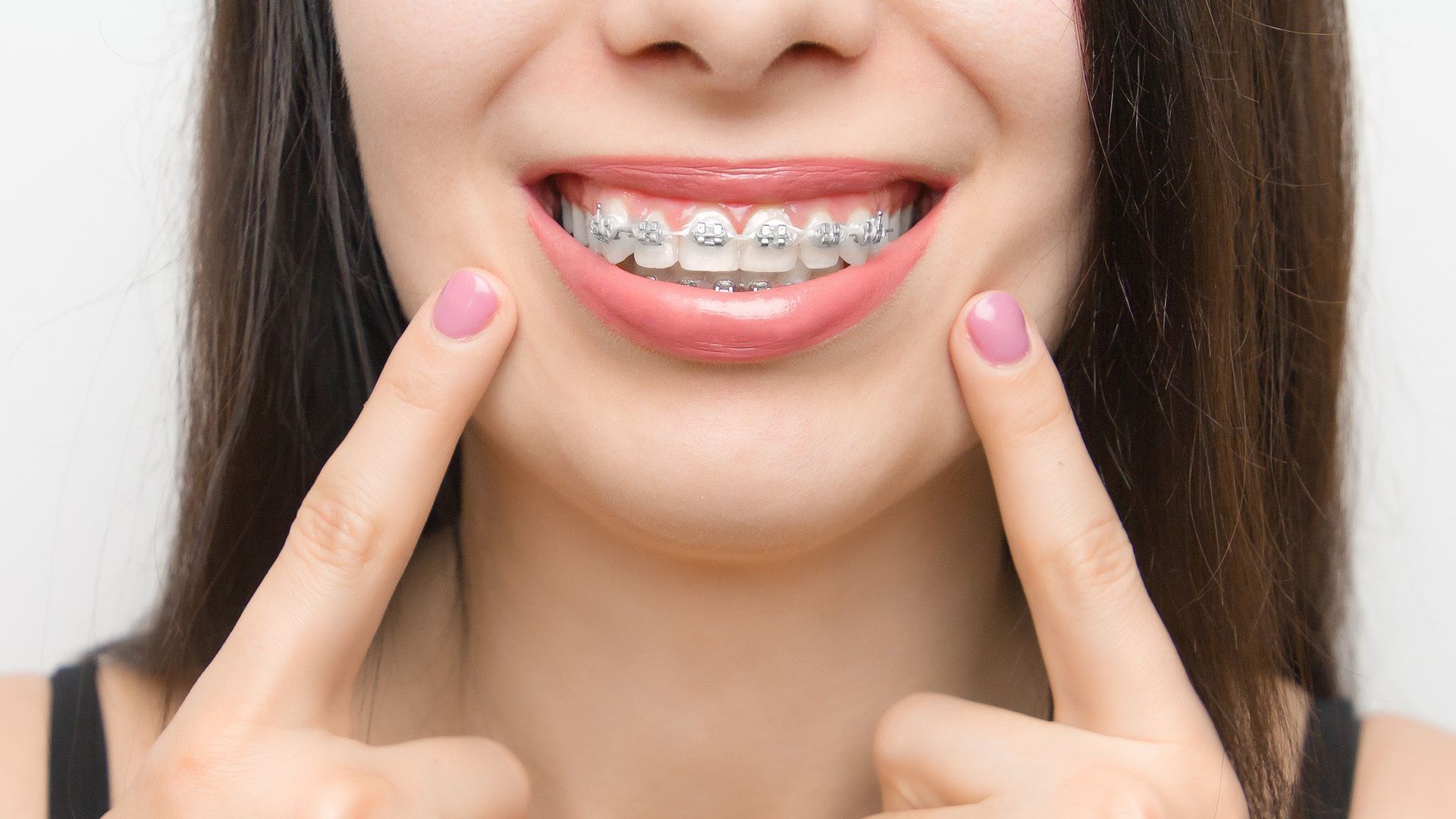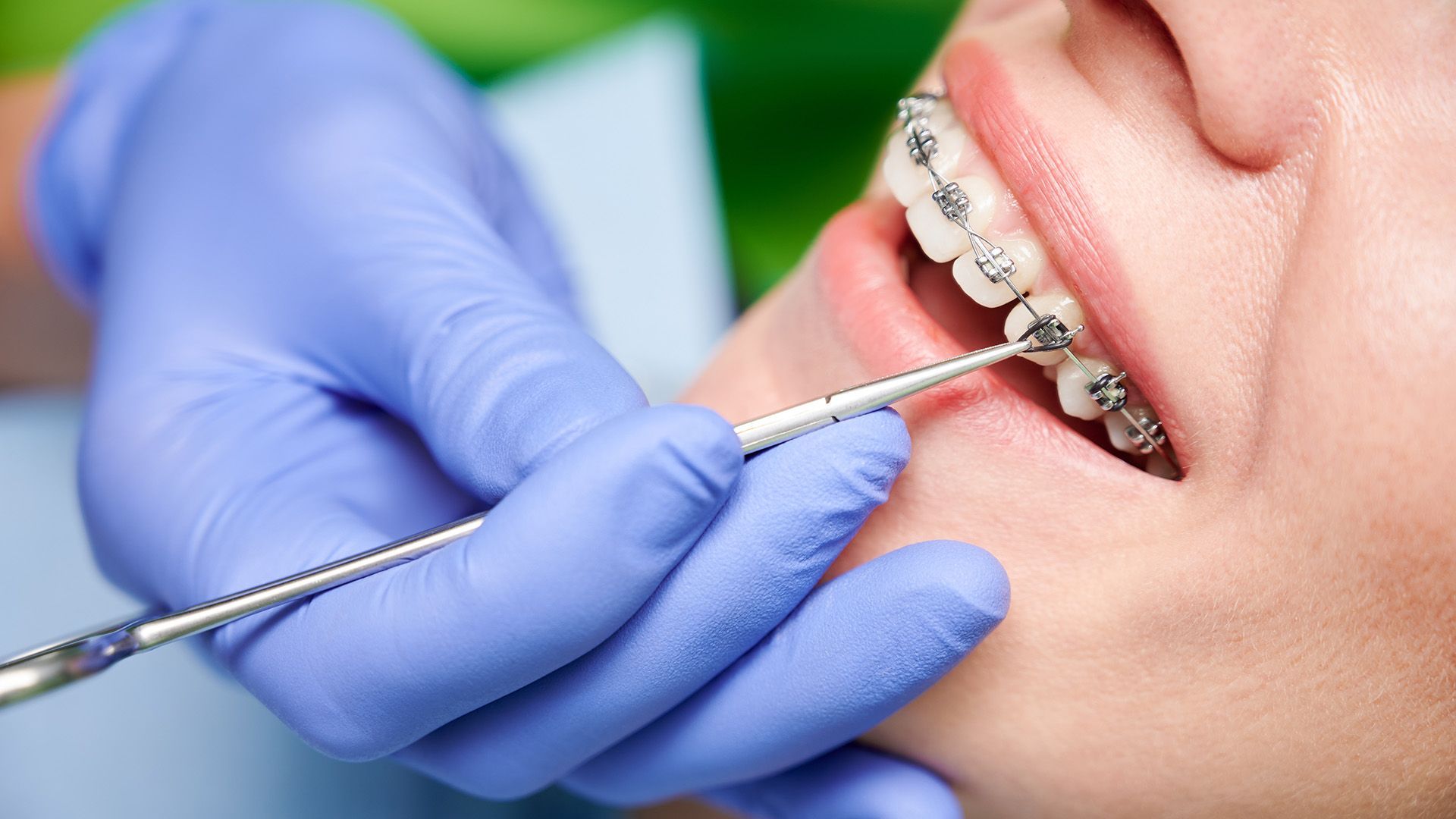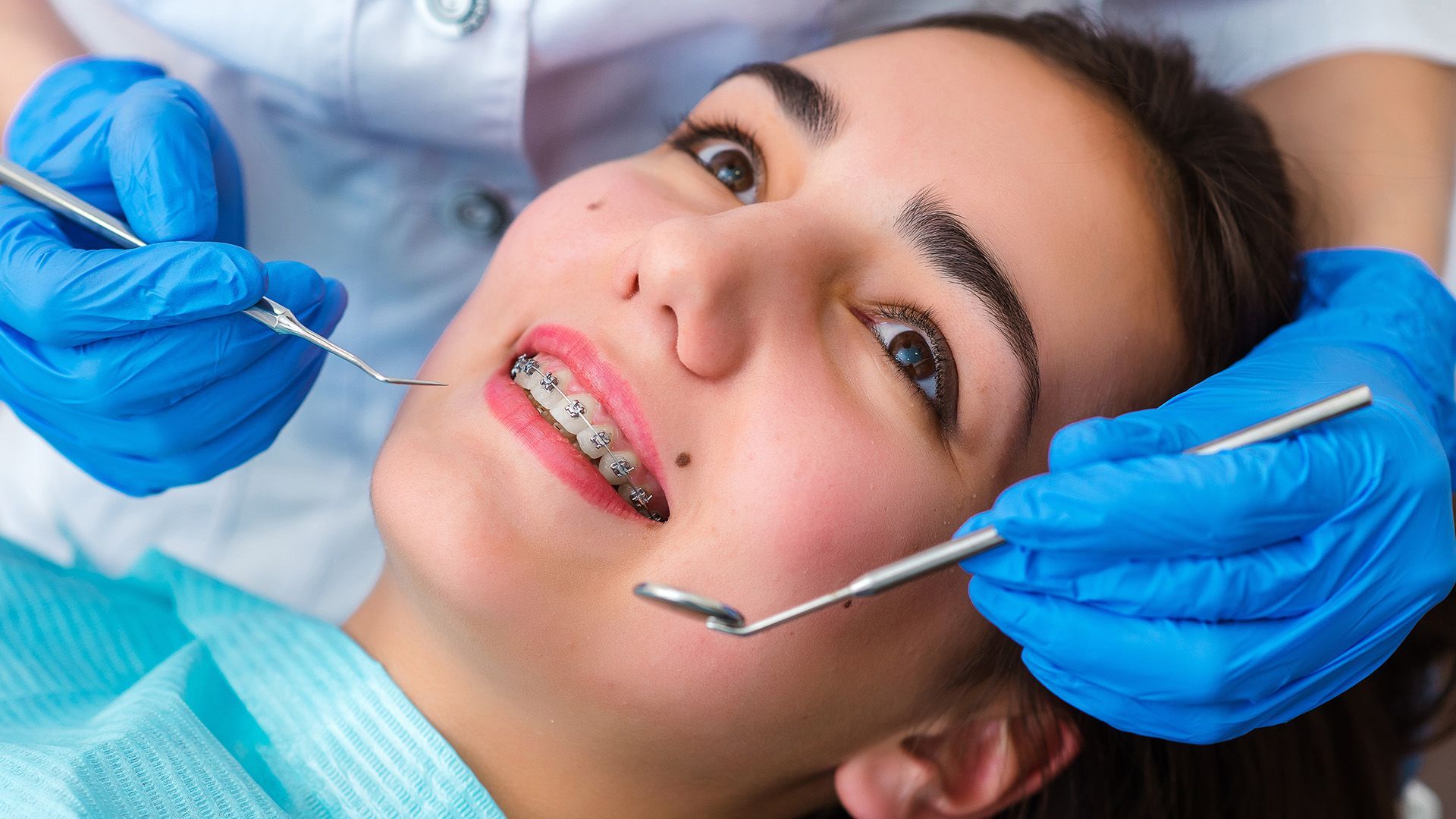What Are Self-Ligating Braces?
What are self ligating braces? Self ligating braces feature small, integrated doors or clips that secure the archwire, removing the need for elastic rings or metal ties. In self ligating designs, these modern brackets guide teeth into alignment with an emphasis on comfort, cleanliness, and efficient appointments. Below, you’ll learn how self-ligating systems compare to traditional braces, the benefits they offer, and practical tips for caring for your braces throughout treatment.

Self-Ligating Braces vs. Traditional Braces
How traditional braces work:
Traditional braces use elastic ligatures or tiny metal ties to hold the archwire to each bracket. Those attachments can increase friction, which may affect the forces needed to move teeth and often means more frequent adjustments. Self ligating brackets replace those ties with a built-in clip that closes over the wire, allowing it to glide more freely while maintaining precise control over tooth movement.
Appearance and comfort differences:
Self ligating brackets tend to be more streamlined, with fewer attachments and no colorful elastics. The cleaner design can make braces look less busy and, for many patients, less noticeable. Reduced friction and lighter forces may also improve comfort during everyday wear. Many practices choose low-profile bracket designs to limit irritation to cheeks and lips, and tailor archwire shapes to support smoother day-to-day comfort.
Adjustment frequency and appointment flow:
Because the wire can move more easily within self ligating brackets, patients may require fewer adjustments. Appointments are typically shorter and focus on changing wires, making minor refinements, and checking progress rather than replacing numerous ligatures. Each case is unique, but many patients appreciate the streamlined chair-side steps and more efficient visits.
Benefits of Self-Ligating Braces
Lower friction for efficient movement:
The clip mechanism reduces resistance between the wire and bracket, helping teeth respond to lighter, more consistent forces. This may smooth out phases of alignment and leveling. While total time depends on your specific orthodontic needs, self ligating technology is designed to limit unnecessary friction and support effective biomechanics.
Comfort-focused forces:
Many patients notice milder pressure with self ligating systems, especially after adjustments. Because the design enables lighter force application, soreness can be reduced. Clinicians often use comfort-minded protocols, including gradual wire progressions and careful bracket placement, to keep treatment as gentle as possible.
Simplified oral hygiene:
Without elastic ligatures, there are fewer nooks where plaque and food debris can accumulate. This can make brushing and flossing easier to manage. Individualized hygiene guidance, such as using interdental brushes and step-by-step flossing techniques, can help keep braces clean and gums healthy throughout treatment.
Quick glance: Key advantages
- Sleeker brackets and a cleaner overall look
- Potentially fewer, shorter appointments
- Lighter forces with reduced friction for comfort
- Easier cleaning due to the absence of elastic ties
Is Treatment with Self-Ligating Braces Faster or More Effective?
Treatment timelines compared to traditional braces:
Certain phases may progress more efficiently with self ligating brackets thanks to reduced friction and simplified adjustments. That said, your total treatment duration still depends on case complexity, bite concerns, age, and adherence to instructions. Thoughtful plans should balance efficiency with precision, focusing on durable, stable results rather than simply speeding through care.
What influences effectiveness:
Success is shaped by accurate diagnosis, precise bracket placement, thoughtful wire sequencing, and the health of bone and gums. Daily habits matter too, consistent oral hygiene, following dietary recommendations, and keeping appointments all help drive steady progress. Self ligating systems offer mechanical advantages, but expert planning and patient cooperation remain essential for optimal outcomes.
Patient feedback and experiences:
Many patients describe smoother appointments and improved comfort after adjustments. People often like the cleaner appearance and find brushing easier without elastic ties. Experiences vary, but feedback commonly highlights predictable progress with fewer day-to-day irritations. If you’re still wondering what self ligating braces are in terms of day-to-day life, most report that the absence of elastic ligatures helps simplify routines.
Are There Any Risks or Precautions?
Common concerns during treatment:
As with any fixed orthodontic appliance, temporary soreness, minor mouth irritation, and brief speech adjustments can occur at the start. Brackets may loosen if exposed to hard or sticky foods. Diligent hygiene is crucial to prevent plaque buildup and gum inflammation.
Possible complications:
If a clip is damaged or a bracket debonds, a repair appointment may be necessary. Inadequate home care can increase the risk of white spot lesions, gum tenderness, or slower tooth movement. Missed visits can delay wire progressions and prolong overall treatment time.
Guidelines to keep treatment on track:
- Brush after meals with a soft-bristled brush and fluoride toothpaste
- Floss daily using orthodontic flossers or threaders; add interdental brushes for tight spaces
- Avoid hard, sticky, and very chewy foods (ice, caramel, popcorn kernels, tough nuts)
- Wear any prescribed elastics exactly as directed
- Attend all scheduled appointments to maintain momentum
- Contact your orthodontic office promptly if a bracket or clip feels loose
Self ligating braces are a modern option for aligning teeth using a clip-based bracket system. If you’re considering whether self-ligating braces are right for your smile, schedule a consultation with a qualified orthodontist to discuss options, ask questions, and build a plan that fits your goals.













